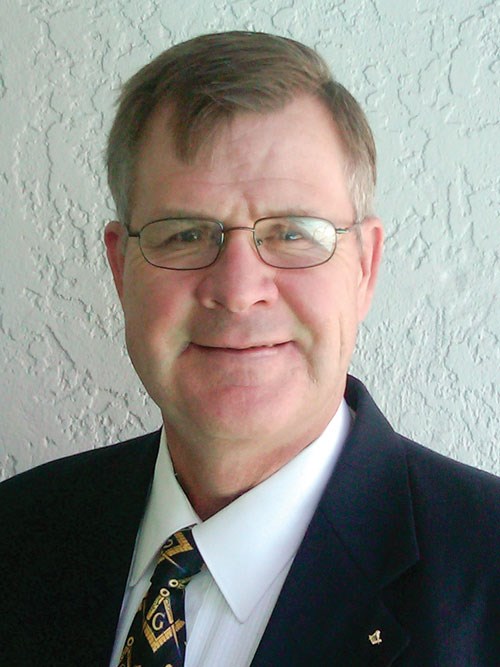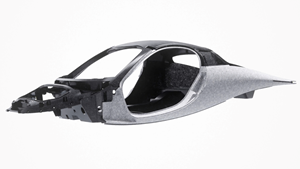Q&A Forum: Automotive Composites
How will fiber-reinforced polymers fare in a post-recession, cost- and fuel-economy-obsessed auto market?
Traditional automakers are caught between a rock and a hard place. They need to reinvent personal transportation in the wake of industry’s worst downturn since the Great Depression. And there is pressure from startups that are launching passenger cars and special-purpose vehicles at lower price points (e.g., Tata Motor’s Nano) or lower tailpipe emissions (Tesla Motors’ all-electric Tesla Roadster, for one). Established automakers must innovate or surrender marketshare. Further, much tougher fuel-efficiency requirements are bearing down on all automakers as governments try to curb CO2 emissions and consumers and fleet owners demand greener vehicles with lower cost of ownership.
Despite these challenges, OEMs are emerging from the recession on better financial footing, and upstart automakers and legacy OEMs alike are preparing to field hybrid-electric and all-electric vehicles. Composites have an unprecedented opening for substantial expansion in the automotive market. CT closes out the year and looks ahead by asking experts who work in and around the auto industry whether or not composites proponents will be able to seize that opportunity. The panelists, CT’s questions and their answers follow.
David Dyke, director of advanced engineering, Magna Exteriors (Aurora, Ontario, Canada).
Dr. Joerg Pohlman, managing director, SGL Automotive Carbon Fibers LLC (Wiesbaden, Germany)
Martin Starkey, managing director — Automotive, Gurit UK (Isle of Wight, U.K.)
Donald Lasell, principal, Think Composites (Palm Harbor, Fla.)
Peter Oswald, formerly VP marketing, Toho Tenax America Inc. (Rockwood, Tenn.)
Mike Shinedling, Dodge Viper program manager, in Chrysler Group LLC’s (Auburn Hills, Mich.) SRT Performance Group.
Tadge Jeuchter, Chevrolet Corvette vehicle chief engineer at General Motors Co. (Detroit, Mich.).
William Harney, executive director R&D, Decoma International (an operating unit of Magna International, Aurora, Ontario, Canada),
Andy Rich, R&D engineer, Plasan Carbon Composites (Bennington, Vt.)
CT: What factors most limit wider adoption of composites in automotive
applications?
David Dyke: Building of confidence in engineers is a large challenge. Engineers in today’s development process typically use computer-aided predictive analysis to make decisions, and there is very little hand calculation, [as in] the past. Predictive analysis of fiber-reinforced polymers is a large challenge, due to fiber orientation after flow when molding with a random glass matrix. Better software-analysis tools to confirm the engineer’s assumptions would greatly help in providing data for sound decision-making at a reduced rate of risk. By removing the risk for the engineer, the decision for wide use becomes a point of fact, not an opinion.
Joerg Pohlman: [The c]ost of carbon fiber is too high for use in series car applications. Series manufacturing processes and know-how are unavailable at [the] OEM.
Martin Starkey: The purchase of an automobile represents one of the most significant decisions we make as consumers, and the products we demand are a challenging blend of cost, quality, design, [and] performance. Quite rightly, the world’s leading OEMs often work on an evolution approach rather than revolution, each new model representing a refined version of the previous one. This makes the adoption of any new technology in automotive a cautious one. This is no different for composites. As with other novel technologies that have managed to achieve this transition, we see an ever-widening adoption of composites migrating down from supercars, to the premium sector, to performance salons [sedans], etc.
Don Lasell: The first important enabler is the need to demonstrate the ability to produce high-quality automotive components at exceptionally high volume. Obviously, the major enabler is cost. But, demonstrating production of high-volume, quality components, dimensionally stable, etc., is just as important. Once high-volume is shown, then cost will rapidly come down with demand.
Peter Oswald: [Lack of] cost-effective materials, material forms and fabrication techniques. [Lack of] damage detection for large structural parts in carbon fiber composite.
CT: Which automotive parts that are currently made of metal do you think are best suited for conversion to composites, and why?
DD: The military and aerospace markets have proven that composites are unmatched when used in structural applications. With the need to lightweight vehicles, and the limitless options of being able to locally reinforce composite parts, the obvious choice is to target body-in-white for metals replacement. Ultimately, a combination of body-in-white and body-in-black (composite material substitution) is likely to be the first wave of components to proliferate composites alternatives.
JP: OEMs producing battery electric vehicles likely will focus on weight savings by use of lightweight materials.
MS: Composites have some very specific advantages and disadvantages over their metallic counterparts, which means there is a natural selection process that earmarks composites for some applications. For instance, lower tooling costs for composites means they are viable for lower production volumes. Significantly higher material cost, however, eliminates high-volume or low-cost platforms. High specific properties are naturally attractive to weight-sensitive vehicles. Compared to steel, slow cycle times for composites limit volume, but they are virtually unconstrained in the shapes to which they can be molded, allowing part integration and design freedom.
DL: Automotive body structure seems best suited for composites. Ultralight weight enables significant improvements in fuel economy. Also, a well-designed composite-intensive vehicle will be safer than any of its metal counterparts. This has been proven in the motorsports racing business. The marketing of the value of carbon fiber in the vehicle will encourage many people to demand their car have that material.
PO: For carbon fiber composites, best targets for conversion are large structural components that do not require Class A finish and offer benefits from part consolidation. A good example would be the floor pan.
CT: If you had an audience with the lead engineers of the world’s top automakers, what would you tell them that they must understand about composites to use them successfully?
DD: [To deliver] solutions that meet their aggressive mass-reduction initiatives, they must think differently and change the paradigm of current BOM/BOP [bill of material/bill of process] to consider alternative materials and manufacturing processes. Once the initial material comparison evaluation is complete, the OEM can run a business case comparison of cost/performance/investment to determine future direction. After establishing direction, the OEM should select a capable supplier/partner very early in the product development process to take advantage of the supplier’s intellectual property and development knowledge. Innovation is achieved by the departure of past paradigms.
JP: New design principles and production technologies have to be developed. Expertise has to be built up within automakers. Thus, hire experts who really understand the materials and the value chain.
MS: Composites are as effective and efficient at replacing more established materials as those materials are at replacing composites. For example, if you try to apply a composite material to a steel design, you make little of the true advantages and carry all the disadvantages. For composite uptake to grow, the world’s leading OEMs will have to re-invent car design, looking at how composites ca, be truly integrated in the production of the vehicle. This, in turn, will take an in-depth understanding of not only composite design considerations, but composite manufacturing processes as well.
DL: Automotive engineers need to understand how to design with composites, what typical sections to use, how a composite part will be manufactured and assembled, who will manufacture it, how to attach it, and what it will cost to produce and tool up.
PO: Think big! Simply replacing sheet metal with composites will reduce weight somewhat, but meeting economic targets will be difficult, particularly where Class A is required. Large structural parts could offer significant weight savings [and] part consolidation savings as well as fabrication and lifecycle savings.
CT: What do you think the average car will look like in 20 years?
DD: Much different due to technology, ,legislation and social conscience. Using new technology to significantly shift the drivetrain and propulsion systems, we will open up more packaging space that was occupied by powertrain components of the past. As a result, we can take advantage of valuable real estate and turn it into customer surprise-and-delight features. Mass reduction, fuel efficiency and consumer/customer-relevant innovations will dictate architecture decisions and material choices.
JP: A combination of lightweight materials will dominate car manufacturing. CFRP will be a standard material. The need to save weight is coming from legislation. I expect a high number of electric vehicles.
MS: The only thing I can be sure of here is what the car won’t look like in 20 years! I don’t think in the late ’80s, anyone would have predicted the designs of today. The only thing I believe would be true is that consumer demands will be even more focused.
DL: Lots of Priuses, but there will still be a lot of pick-up trucks. Aerodynamics only does so much — the mass must come down! Also, I know most people would always prefer a larger car. These could benefit from carbon fiber lightening just as much as the little ones. Profit margins would be higher too!
PO: In the U.S., the average car would still have room for four people, plus dog and luggage and golf clubs. [The] car would have lightweight body structure (due to composites), be more aerodynamic (due to composites) and have a lightweight power unit and drive train (due to composites). Internal combustion is still likely to be the dominant power unit due to flexibility, power and range, but CNG [compressed natural gas] fuel likely will be more common.
CT: We’ve mentioned CFRP along the way, but let’s focus on it: There was a lot of momentum and innovative new uses of CFRP on production automobiles in the 2003-2004 timeframe, but since then, with the exception of the 50th-anniversary Corvette hood, the Mustang Cobra, the Viper ACR, and Corvette ZR1, we haven’t seen a lot of new CFRP applications on mass-produced vehicles and virtually all of them have been on performance platforms. Will that change? If so, how?
William Harney: Although carbon fiber provides significant and necessary mass reduction for BEVs and PHEVs [battery-electric vehicles and plug-in hybrid electric vehicles], the cost of carbon fiber becomes a greater issue when stacked up against the cost of EV technology itself. The paradox will to some extent be solved with advanced D-LFT and other thermoplastic composites in the medium term. New fuel-economy standards will create pull for more composites, but they will be based initially on high-performance glass with increasing use of thermoplastics.
AR: In the short term, the early adopters will be those applications where performance is more important than cost (such as high-end sports cars). However, when fuel economy becomes a major driver to save weight, the cost-benefit analysis will start to move in our direction.
CT: What, in your opinion, is the single largest hurdle to greater acceptance and use of CFRP in the automotive industry?
MS: Material cost. It will depend on the cost per pound of weight saved ….. An average passenger car can usually afford $1 to $2 in cost for every pound saved. For a higher priced performance car, that weight-saving value can be anywhere from $5 to $30 per pound saved. With the high price of carbon fiber, it’s very difficult to save weight at the rate of less than $5/lb. Also, in addition to weight, there is marketing value for a performance car to offer a carbon fiber part. Not so much in a conventional passenger car.
TJ: Net cost per panel is a real issue. We’d love to engineer every panel we make with it. However, at today’s cost, it just doesn’t offset the business case. With 100 years of industry inertia and legacy costs, and an entire infrastructure optimized around the steel solution, it’s hard to see anything else. On the other hand, when you clean the balance sheets of 100 years of history and have a chance to deal with the more-subtle aspects of legacy costs, then that can affect the business case for everything in the corporation.
AR: Cost and manufacturing comfort. Cost is always a big challenge in the automotive market, especially in the higher volume cars, but the challenge of making the OEMs feel comfortable with these materials is hard to quantify. All the OEMs’ designers are very familiar with the properties and the manufacturing processes for metals, but we have rarely been given a part to bid on that was actually designed to be carbon fiber. We have to educate the customers most of the time, even the companies that have had some experience with CF. Any big company making cars has different departments with different levels of understanding of composites, and they don’t always consult with their own composites experts before they design a part. So we always see parts that are designed to be sheet metal, and the customers will ask, “Can you make this in carbon fiber”? This lack of comfort level … is a significant hurdle for the technology. Even where the costs make sense, car companies are naturally hesitant to take a risk on using a material they are not familiar with.
CT: What technological challenges and/or misperceptions must be addressed before we see greater usage?
MS: Processing and molding cycle time are a big challenge in prepreg applications when you get above 10,000 units/year. Conventional forming methods like compression and injection molding don’t utilize all of the potential benefits of carbon because they typically use chopped [instead of continuous] fibers and have greater minimum thickness requirements. Finding resin systems with good adhesion to carbon and good processability is also a challenge. The current chemistry hasn’t delivered sufficient adhesion to the fiber yet, but I believe it will at some point. A big reason more research isn’t put into solving this issue is the cost of the fiber. Once carbon fiber is more of a mass-market material, there will be more research and discoveries to solve the current problems.
TJ: The manufacturing process has a lot of little technical issues, like cycle time, labor time, consistent part quality, and surface finish. Individually, these are not insurmountable challenges, but the combination of all these little issues coupled with the fact that it is a nonstandard material to make a car, makes for an uphill battle finding acceptance … in a risk-averse market.
WH: The biggest hurdle, once pricing of carbon fiber is at target, is the challenge of modeling and designing CFRP components and subsystems to interface with a conventional body-in-white architecture — particularly with respect to crash requirements. One reason most CFRP applications in niche vehicles are limited to hoods and removable panels is that they are bolt-on. Once all bolt-on opportunities are exploited, the going will get really tough.
CT: How will CFRP fare in competition with workhorse composites like SMC, BMC, GMT, LFT and D-LFT?
MS: In the near term, I would guess traditional glass-reinforced composites will do better because of the current economic pressures. In the long term, high performance composites should have strong growth as carbon fiber capacity expands and costs are reduced.
AR: The less costly composites have all been around for a long time, and very little has changed to make them “new.” They have a 20 percent lighter SMC formulation or in-line compounding, and they seem to have solved a lot of the paint pop issues, but for the most part, it’s still the same SMC/GMT that has been around a long time. It will have its niche in places where volumes are more than 20,000/yr and less than 90,000/yr. In general, these are not structural parts either, and never could be, due to the inherent strength of the material. It’s a complementary technology, but not a direct competitor for carbon fiber in most applications.
WH: There is still significant opportunity and more performance headroom in SMC and D-LFT components and advanced closed structures that have yet to be exploited. This includes high-performance matrices, tactical local reinforcing, fiber orientation and composite-welding techniques.
CT: What role will CFRP play in alternative powertrain vehicles — hybrid electric, plug-in electric, and fuel-cell vehicles?
MS: Many new alternative powertrain vehicles are in the exclusive niche market — Tesla, Fisker. Carbon will play a larger role in these vehicles. For mass-market alternative vehicles ( theVolt, etc.), it is still a question of cost per pound of weight saved.
AR: The newer powertrains are a risk in themselves, so car companies are taking one step at a time. If they build a new vehicle with a new powertrain and a whole lot of CFRP, they have significantly increased their risk to the success of that vehicle. I think that’s why we are seeing CFRP on gas-powered cars for the most part, and [see] steel being used to make the hybrids. That may change as the risk of both composites and hybrid engines comes down.
CT: What applications will see the greatest growth in CFRP materials in the next five years? If there were no other barriers to entry (price, availability, production speeds, etc.), which applications on a typical passenger vehicle would benefit most from conversion to CFRP?
MS: I see the greatest automotive growth in Class A panels and exposed weave interior trim on performance and luxury vehicles. If those barriers were removed, applications might include front crush structures, front cross members, seat structures, Class-A panels — actually the sky is the limit. Carbon fiber has incredible material properties and would revolutionize the automobile if those barriers were removed.
TJ: We think we’ve pretty much overcome the technical challenges and there’s no downside we see. There is a learning curve, obviously, and new criteria you have to get used to, but integration into the vehicle poses no technical challenges now if the other issues were resolved.
WH: Bolt-on will be the first wave, followed by body-in-white integrated components, but the greatest growth will occur with high mass-reduction opportunities on components like the vehicle front, where you can lightweight without creating polar-moment (drivability) issues. Also, CFRP will do well when compared against metals in lifecycle analyses when the true energy cost of using one system vs. the other is compared.
Related Content
Mar-Bal expands SMC expertise through AltraSet materials division
The BMC company aims to fill the SMC market gap for those seeking optimal, low-volume demand with custom formulation and high material value.
Read MoreAptera joins forces with C.P.C. Group to accelerate solar EV production
Specialized composite bodies are being produced in Modena, Italy, for Aptera’s BinC vehicle, enabling eventual manufacturing ramp-up of 40 vehicles/day to meet demand targets.
Read MoreCo-molding SMC with braided glass fiber demonstrates truck bed potential
Prepreg co-molding compound by IDI Composites International and A&P Technology enables new geometries and levels of strength and resiliency for automotive, mobility.
Read MoreComposite materials, design enable challenging Corvette exterior components
General Motors and partners Premix-Hadlock and Albar cite creative engineering and a move toward pigmented sheet molding compound (SMC) to produce cosmetic components that met strict thermal requirements.
Read MoreRead Next
VIDEO: High-volume processing for fiberglass components
Cannon Ergos, a company specializing in high-ton presses and equipment for composites fabrication and plastics processing, displayed automotive and industrial components at CAMX 2024.
Read MoreAll-recycled, needle-punched nonwoven CFRP slashes carbon footprint of Formula 2 seat
Dallara and Tenowo collaborate to produce a race-ready Formula 2 seat using recycled carbon fiber, reducing CO2 emissions by 97.5% compared to virgin materials.
Read More



























